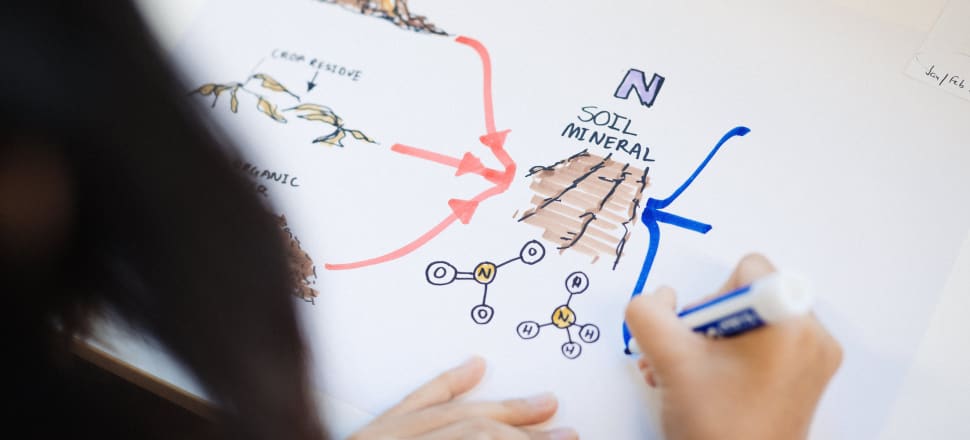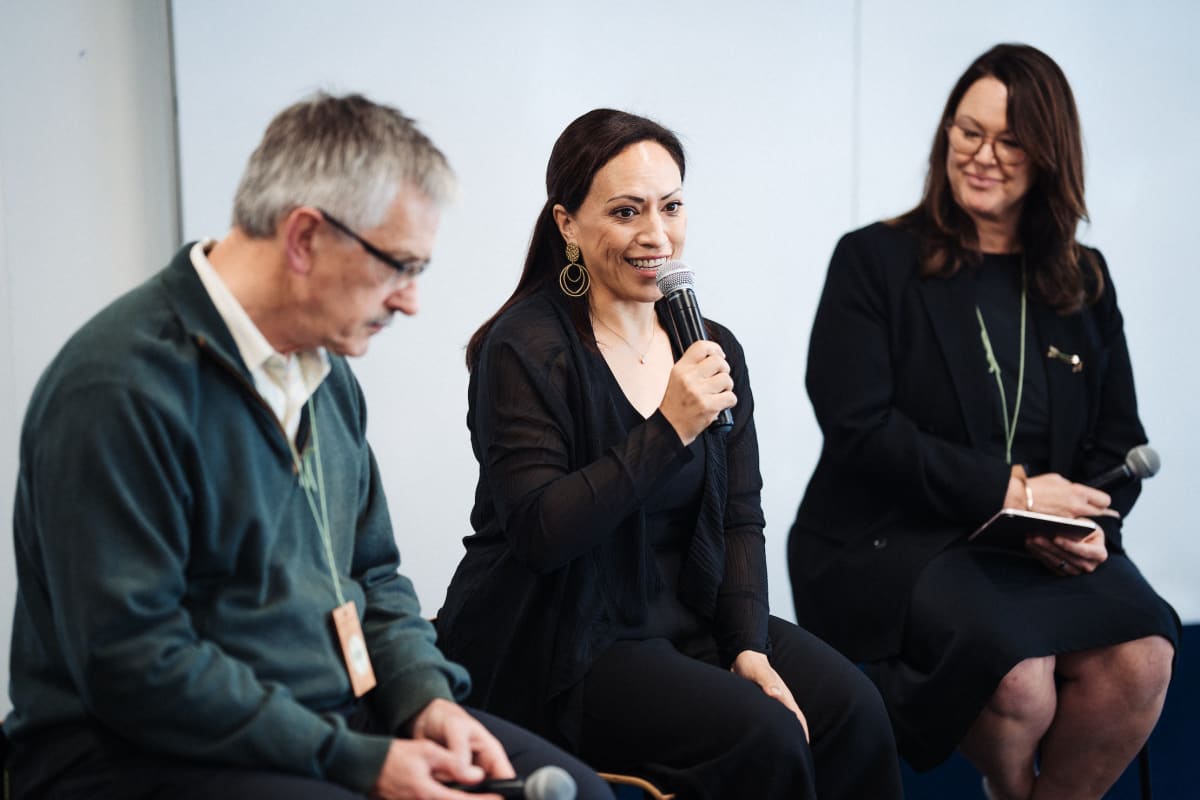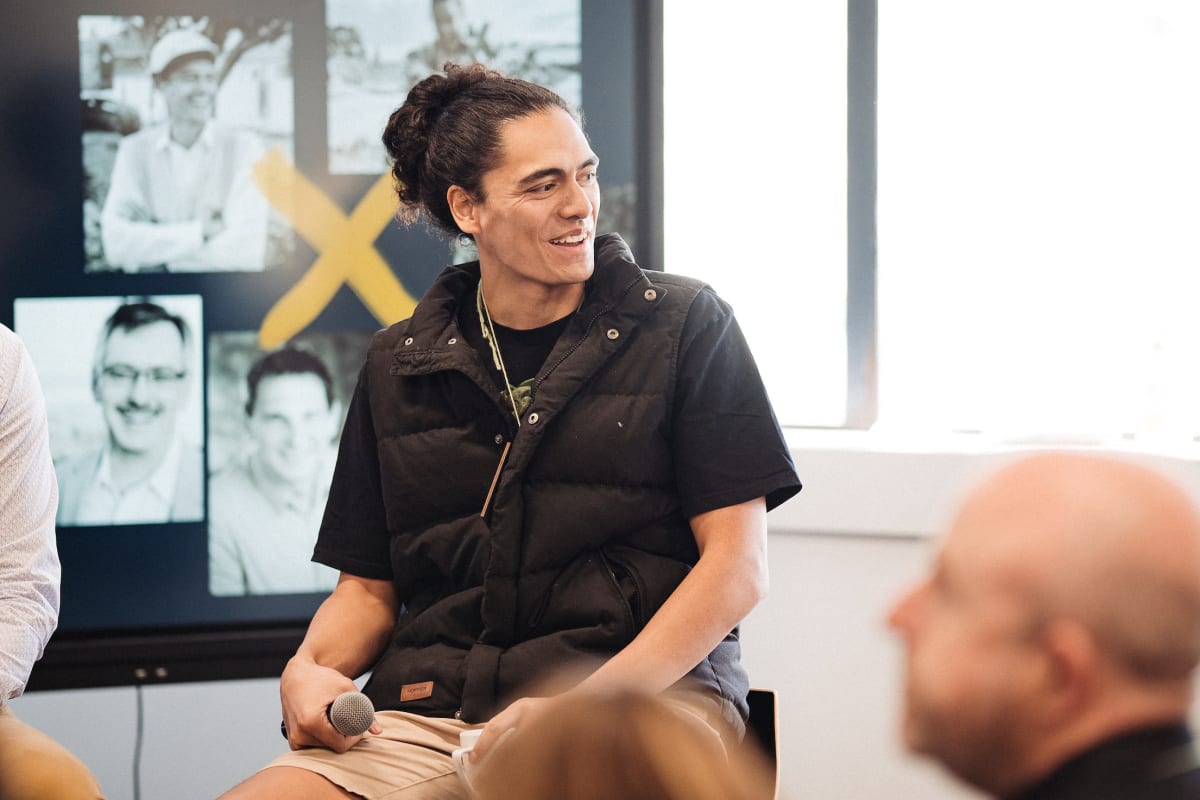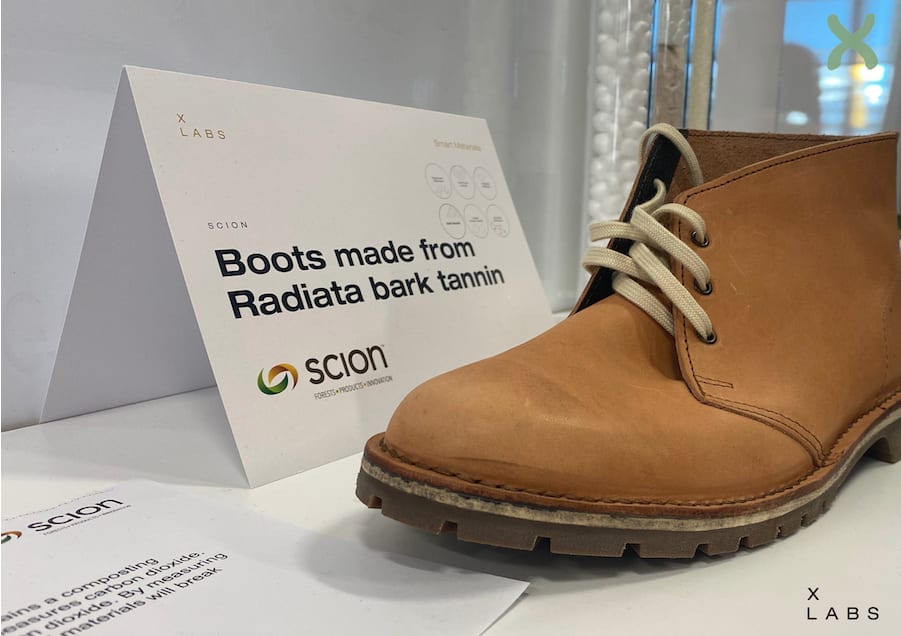
A circular future requires bold government leadership, a shift in mindset about our relationship with the natural world, and collaboration on a scale never seen before, writes Alina Siegfried. | Partner Content
Our current linear production systems are threatening our way of life, and the numbers are staggering. We send 12.59 million tonnes of waste to landfill every year in New Zealand, the vast majority of which is compostable organic matter which emits methane. We also generate 7.14 tonnes of CO2 emissions per capita, among the highest in the world. At a global level, 45 percent of all greenhouse gas emissions come from the way we make products, grow our food, and use land.
So what does the future of the circular economy look like for Aotearoa?
That is the question that we put to five panellists to explore in conversation on the first day of the XLabs LIVE circular economy design sprint that brought together 15 businesses, and 250 circular change-makers, business leaders, partners, and expert collaborators in May this year.
The concepts we explored towards a circular, regenerative economy are a far cry from the extractive economic paradigm that we find ourselves in today, where the predominant mindset is that gifts of nature are there for human use — to take, make, and eventually waste.
While the problems are significant, the opportunities they present are even bigger. A 2018 report found that the circular economy opportunity for Auckland alone is valued at NZ$8.8 billion by 2030. The Circularity Gap Reporting Initiative reports that as of 2022, only 8.6 percent of the world is circular. Imagine the possibilities to reduce our footprint if we were to keep materials in flow at the highest value, design out waste and pollution, and reduce our emissions?
XLabs is Aotearoa New Zealand’s first circular economy training programme, designed to create the space for collaborative collisions, imaginative innovation, and tangible progress towards a circular future. The programme directly addresses the need identified in the Emissions Reduction Plan’s table of actions — to shift businesses to circular business models. The move to a circular economy is a conversation we need to shape together, and we wanted to provide our teams with a bold vision of what the future could look like — once we can imagine it, we can redesign our businesses to build that future.
Our panellists represented government, Māori business, innovative entrepreneurship, journalism, and biosciences, moderated by Circularity founder and CEO and XLabs co-founder Louise Nash. They addressed teams from Silver Fern Farms, Lion, The Western Initiative, Beca, Downer, Transpower, LeaderBrand, and several smaller businesses and community organisations, each committed to exploring, prototyping, validating, and refining circular solutions.
As the conversation flowed between panellists, five themes emerged around what a circular future might look like and the conditions required to get us there.

A shift in mindset about our relationship with the natural world
A transition towards a circular future for Aotearoa must include the forging of a stronger connection to te taiao — the natural world — and also with mātauranga Māori.
When asked what the circular economy meant to him, Newsroom columnist and climate and business journalist Rod Oram’s reply was simple:
“For me, the circular economy means that everything I borrowed from nature for my life and wellbeing, I return to nature.”
Rod’s vision of the circular economy is one that resonated with many in the audience, and it represents a great shift in how we see ourselves in relation to the natural world.
Tamoko Ormsby, who is Kaitaki Kaupapa Project Lead at Ka Awatea Services, described this shift with an analogy that many can of us can readily understand — those of us who are parents don’t look after our children, feed them, and nurture them because it’s the law, or so that they don’t die. We do it because we love them — because we innately understand ourselves being intricately connected with them and our mutual well-being intertwined.
So it must be with how we view the environment, as a web of life intricately interconnected with ourselves. We look after it not because policy says that we should or because we have a duty to the natural world. We look after it because we see ourselves as an integral part of the natural world — a mindset which underpins the concept of kaitiakitanga.
We are blessed here in Aotearoa New Zealand with a stronger connection to indigenous knowledge than many other colonised nations, and with the right reciprocal relationships in place between business and iwi, hapu, and other Māori communities, we can build upon the tāonga that this knowledge presents.
Bold government leadership will play an integral part in the acceleration towards a circular future, in the form of both legislation and incentives.
The government is leading some promising work in this regard. Anne Haira, the Ministry for the Environment’s Deputy Secretary, referred to the work the ministry is doing, which includes an investment of $60-70m into the Waste Minimisation Fund in the coming year and $50m for the Plastics Innovation Fund over four years. Budget 2022 also allocated $31m to develop a Māori climate action platform, to support an equitable transition for Māori, and resource community-based kaupapa Māori and tangata Māori solutions.
Oram emphasised the efforts of the environment ministry to involve tangata whenua in environmental efforts, pointing to the leading example of the Environment Aotearoa 2022 report. For the first time, this report drew from both mātauranga Māori and western science to examine the state of our environment, and the data is presented eight headings representing the domains of each of the stars of Matariki — including the star Pōhutukawa to acknowledge and mourn for what has been lost.
Haira also spoke of the role of government to support and enable businesses to transition towards a circular economy. She acknowledged businesses need clarity and certainty from the Government around policies, incentives, and support for the shift. That clarity influences how businesses make decisions, how they invest, and how they plan for the future, and she signalled legislative change coming later this year as part of the government’s waste minimisation strategy is intended to provide that clarity for businesses and an indication of the way in which policy and regulation will head.
On the climate change front, the Emissions Reduction Plan has an entire section dedicated to the circular economy and bioeconomy. Action points include better collaborating with businesses and industry-led programmes that can support businesses to embrace the circular economy.
Collaboration on a scale never seen before
A circular economy for Aotearoa will require us to harness the embedded intelligence of emerging technologies, along with forging strong networked partnerships, to collaborate at a scale in which we never have before.
Systemic change requires diverse actors to break down silos and come together to work on wicked problems.
Panellist Matthew Jackson described how he went about developing the concept for the waste-to-energy company he co-founded. He shared with the audience how Aotearoa could convert organic waste streams into bioenergy, preventing it from heading into a landfill, and encouraged circular economy advocates, councils, and industry business leaders to approach co-owned facilities with the mindset of building a relationship rather than coming in with a traditional pitch. In building his impact organisation, Alimentary Systems, he explains how he has sat down for at least a hundred cups of tea, in coffee shops and around kitchen tables to speak with Iwi.
Scion’s Florian Graichen, General Manager for Bioproducts and Biomanufacturing, referred to partnership as the most important lever to pull in, taking us towards a circular future. He said there aren’t many countries in the world as well equipped as New Zealand to become better networked and forge close partnerships. As we move from value chains to value networks, the commercial advantage of our two degrees of separation cannot be understated.
Haira shared a story of her trip to Stanford with Te Hono, an environment-focused bootcamp for leaders in New Zealand’s food and fibre sector to innovate and connect with international experts. Over the course of a week, she saw senior leaders from primary sector businesses who, being firm competitors, had seldom spoken with one another previously, coming together with a unified vision for the country's primary production sector. A circular future requires bold leadership that fosters collaboration and shares knowledge and solutions for the greater good. As Haira said, we don’t have the luxury of time.
Localised economies based on reciprocal relationships and trust
A circular future will see us localising our economies and closing the gaps across human relationships, supply chains, and the places in which we live, work, and play.
XLabs co-founder Bree Asmus asked the question to Ormsby of how we could better integrate Te Ao Māori into the circular economy. He pointed to the wisdom of Māori academic Lynda Tuhaiwai-Smith, who promoted closing the distance in many areas - between ourselves and te taiao (the natural world), between the powerful and the powerless, and between us all in communities and cities. This concept closely aligned with the challenge that The Western Initiative team brought to XLabs, which was to explore how businesses could better build reciprocal relationships with Māori in ways that are grounded in genuine understanding and respect for people, place, and tīkanga.

Particularly in the lesser talked about elements of a circular economy, the networked participation and regenerative behaviours required to keep materials in flow and regenerate both ecological and social living systems, reciprocity and trust are crucial to success. In practice, that means closing the distance between ourselves and the places in which we live, work, play, and be. It means localising our supply chains, finding and creating value much closer to home, and deepening our roots in the places we occupy on this Earth.
Oram pointed to the example of Hamilton, which has big plans to become a “20-minute city” — an urban residential design concept that aims to cut private vehicle usage by creating neighbourhoods where residents can access everything they need in day-to-day life by walking, cycling, or taking short trips on public transport. The benefits extend far beyond transforming transportation to be more sustainable - the village-within-a-city approach eases congestion, reduces isolation, improves health, frees up time previously taken by commuting, and provides more opportunities for social connection.
Localised economies also help us to deepen our understanding and connection to the problems we are trying to solve. Ormsby said a big reason so much food goes to waste is because we are disconnected from the system that produced it — we often have no idea where our food was grown or produced, who produced it, how it was produced, and exactly how it arrived in our shopping trolley. Imagine if we knew exactly where our food came from and could put a name and face to the person who made it? We might think twice before throwing it in the bin.
Nature-based products, materials, and solutions
For a truly regenerative circular economy we need to take inspiration from the gold standard of regenerative systems — nature itself.
In natural systems, there is no waste. Every output from one element of a system is the input for another element. These systems are efficient and ever evolving, maximising value.
Florian shared that the circular economy and bioeconomy now underpins much of the work that goes on at Scion. Bio-based and bio-inspired solutions are a big focus area, and many of these products were on display at the Innovation Showcase at XLabs, which displayed over 50 circular products, platforms, ideas, and solutions.

Graichen cautioned XLabs teams to not be restricted by today’s business models, processes, or materials performance. The science is moving quickly in many areas, and the promise of the circular economy lies in re-imagining the future based on what could be, not what already exists.
He also encouraged them to resist thinking about solutions in binary terms — innovation is not a zero-sum game where one solution negates the need for an alternative. Just as the mark of a healthy natural ecosystem is one where a diversity of plant and animal life exists, we need a diverse range of complementary solutions to bring about a circular future. We could think of each solution as a tile within the mosaic of our broader business, social, and cultural ecosystems. The tiles might be fantastic in their own right, but it is when we stand back and look at how they all work together that the more beautiful picture emerges.
What role will you play in shaping the future to be more circular?
As we collectively re-imagine the future and accelerate the transition towards a circular economy, there is scope for every single business, community organisation, governing body, and individual to redesign their products, processes, operations, and material flows to be more circular.
The movement is growing. The momentum is accelerating. New Zealand’s transition to a circular economy is well underway, and we invite you to join us.
www.circularity.co.nz
www.xlabs.nz
This op-ed is one of a series of partner content columns from Circularity







